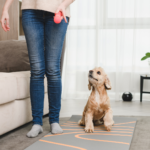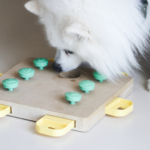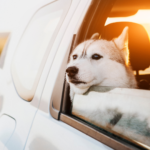Introduction
Creating a dog-friendly garden is a thoughtful endeavor that not only enhances your outdoor space but also ensures the safety and well-being of your furry friend. This article aims to guide you through essential plants and practices that contribute to a harmonious garden environment, striking a balance between aesthetics and canine-friendly features.
Canine-Safe Plants and Flowers
One of the primary concerns when designing a dog-friendly garden lies in the potential toxicity of common plants. Many ornamental flowers and shrubs found in typical gardens can pose serious health risks to our canine companions. From azaleas to lilies, some plants contain compounds that, when ingested by dogs, lead to adverse reactions ranging from mild gastrointestinal upset to severe toxicity. As responsible pet owners, it becomes crucial to identify and eliminate these hazards to ensure the well-being of our four-legged friends.
Navigating the world of dog-friendly flora opens up a realm of possibilities to design a garden that thrives with both beauty and safety. Consider incorporating marigolds, not only for their vibrant hues but also for their non-toxic nature. Sunflowers, with their cheerful blooms, stand as another excellent choice, adding a touch of sunshine without compromising your pet’s health. Additionally, explore the realm of pet-friendly herbs like rosemary or basil, which not only bring aromatic delights but are safe for your canine companions.
Understanding the importance of these selections involves more than just aesthetics. Dog-friendly plants contribute not only to the visual appeal of your garden but also to the overall well-being of your pet. As your dog explores the outdoor space, nibbling here and there, you can rest assured that these thoughtfully chosen plants won’t lead to unexpected veterinary visits.
Avoiding Harmful Chemicals
Amidst the quest for a lush garden, the use of pesticides, fertilizers, and herbicides can inadvertently introduce hazards for our canine companions. Traditional chemical-laden products may promise a thriving garden, but they often pose risks to our pets’ well-being. Dogs, in their curious nature, may come into contact with these substances while exploring the green haven, leading to potential health issues ranging from mild irritation to more severe complications.
A garden can flourish without compromising your dog’s safety by embracing organic alternatives to conventional chemical treatments. Explore the world of organic pesticides and fertilizers that utilize natural ingredients, minimizing the risk of harmful exposure to your furry friend. Opt for pet-friendly products, ensuring that the labels boast ingredients devoid of toxic chemicals.
When applying any garden treatments, whether organic or conventional, it’s crucial to follow best practices for the safety of your dog. Keep your pet indoors during application and allow sufficient time for the substances to settle before granting them access to the treated areas. Rinsing off your dog’s paws after outdoor excursions can further reduce the risk of exposure.
Educating yourself on the potential dangers of certain chemicals and understanding how to choose and apply pet-friendly alternatives empowers you as a responsible pet owner. By prioritizing your dog’s safety in the garden, you create an environment where your pet can enjoy the outdoors without the looming threat of harmful substances.
Designing a Dog-Friendly Layout
As we transform our outdoor spaces into a sanctuary for both nature and our canine companions, certain design elements can inadvertently pose risks to our dogs. Gardens with sharp edges, toxic mulch, or unstable structures may become potential hazards, leading to injuries or health complications for our furry friends. The allure of a beautifully landscaped garden should not compromise the safety of our pets.
Creating a dog-friendly layout involves thoughtful planning and a keen understanding of potential hazards. One key consideration is the use of soft edges instead of sharp, angular features. Opt for rounded borders and pathways to minimize the risk of injuries in case your dog decides to explore with exuberance.
Sturdy structures play a vital role in ensuring the safety of your garden. Invest in durable, well-anchored elements like fences, gates, and trellises that can withstand your dog’s playful interactions without posing a risk of collapse.
Avoiding toxic materials is paramount in crafting a safe haven for your pup. Certain types of mulch, while visually appealing, can be harmful if ingested. Choose pet-safe mulch options made from materials like cedar or pine, ensuring they are free from harmful chemicals.
Consider creating designated play areas for your dog within the garden. These areas can be surfaced with materials like pet-friendly artificial turf or soft ground covers to provide a comfortable and secure space for your pup to romp and play.
Water Safety and Accessibility
While the allure of water features in a garden is undeniable, they can pose significant risks to our canine friends. Unsecured ponds or pools may present drowning hazards for dogs, especially those with limited swimming abilities. Additionally, ensuring your dog has easy access to clean water is vital for their well-being, as dehydration can lead to various health issues.
Securing water features should be a top priority in a dog-friendly garden. Install barriers around ponds or pools to prevent unsupervised access, reducing the risk of accidental falls or submersion. Ensure that any openings are small enough to prevent your dog from squeezing through.
Consider incorporating canine-friendly water features into your garden design. Dog-friendly fountains or shallow water basins can provide a refreshing and safe area for your dog to cool off. These features should have gradual slopes or steps to allow easy entry and exit, catering to dogs of all sizes.
Stressing the importance of maintaining hydration stations is crucial. Dogs, especially in warmer weather, need consistent access to clean water. Strategically place water bowls in easily accessible locations throughout the garden, ensuring that your pup can stay well-hydrated during their outdoor adventures.
Conclusion
As you embark on this journey of cultivating a canine-friendly garden, remember that it’s not just about creating a beautiful space but also about fostering a haven where your furry friend can thrive. By implementing these practices, you contribute to the well-being and happiness of both your garden and your beloved companion.









